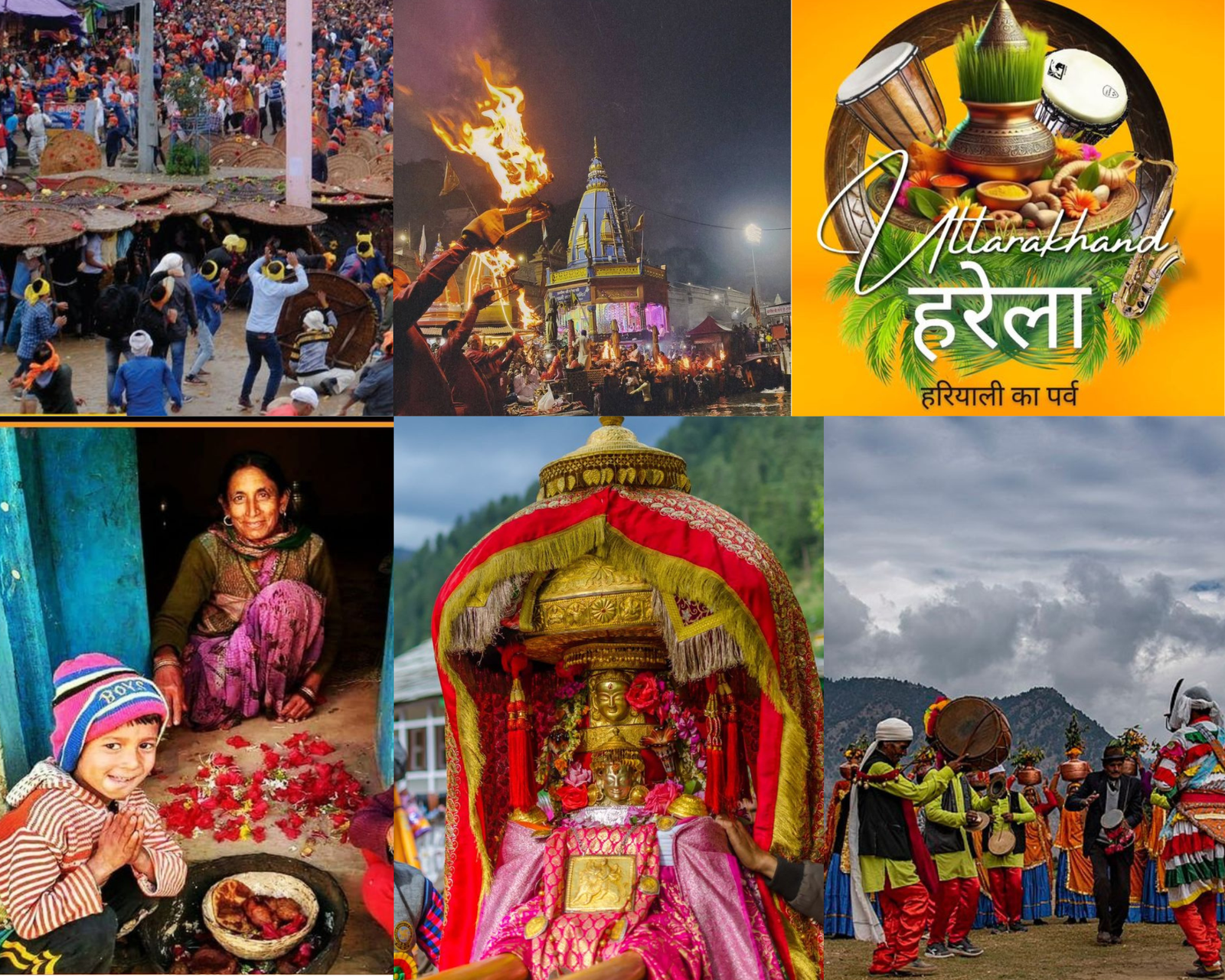When people talk about festivals of Uttarakhand, they usually imagine snow peaks, Rishikesh yoga vibes, or pilgrimages like Kedarnath. But honestly, what stayed with me the most was not just the mountains—it was the festivals. The way people here celebrate… it’s raw, emotional, and deeply tied to nature and faith.
Festivals in Uttarakhand aren’t just “holidays” like we see in cities. They are life events. They carry stories, songs, flavors, even struggles. I spent some weeks in the hills, and every festival I saw felt more like a family gathering than a big flashy event. Let me just walk you through some of them, in the same way I experienced them.
MAKAR SANKRANTI – or Ghughutiya, as Kumaon calls it
So, in the plains Makar Sankranti means kites in the sky. But in Kumaon, kids don’t run for kites. They wear necklaces made of little sweets. I’m not kidding—tiny dough shapes fried and dipped in jaggery, strung together, hanging around their necks.
And here’s the sweetest part: those sweets are for birds. Kids literally call out to sparrows and crows, hoping they’ll come and nibble. One boy in Almora kept shouting “Ghughuti ghughuti, kaan kaan!” and stretched out his necklace. The bird didn’t show up, but his smile didn’t fade. That innocence explains what Sankranti is here—it’s about sharing, even with nature.
At homes, til laddoos and warm dishes are cooked. The cold January morning, the smell of jaggery in the air, and kids running with those edible necklaces… it’s one of those things you don’t forget.
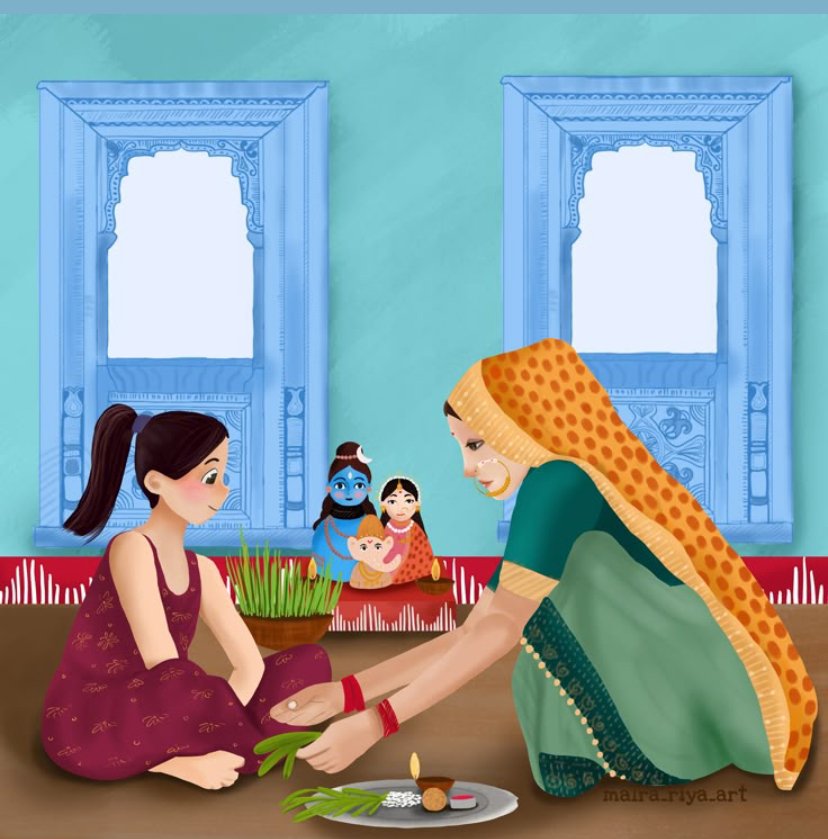
HARELA – the festival of sowing hope
Harela happens in July, just before monsoon. Ten days earlier, families sow different grains in small pots at home. By the time the festival comes, the seeds sprout into soft green shoots. These are cut and placed on everyone’s head as blessings.
It sounds simple, but it’s so deep. It’s literally a prayer for a good harvest. In Almora, I saw little kids making clay figures of cows and farmers during Harela—it was art mixed with devotion.
I realized one thing: in cities, we buy plants for “decor.” Here, people worship sprouts as life itself. Harela is not a loud festival. It’s quiet, almost humble. But it hits you with a thought—prosperity starts with soil and seeds, not malls and money.
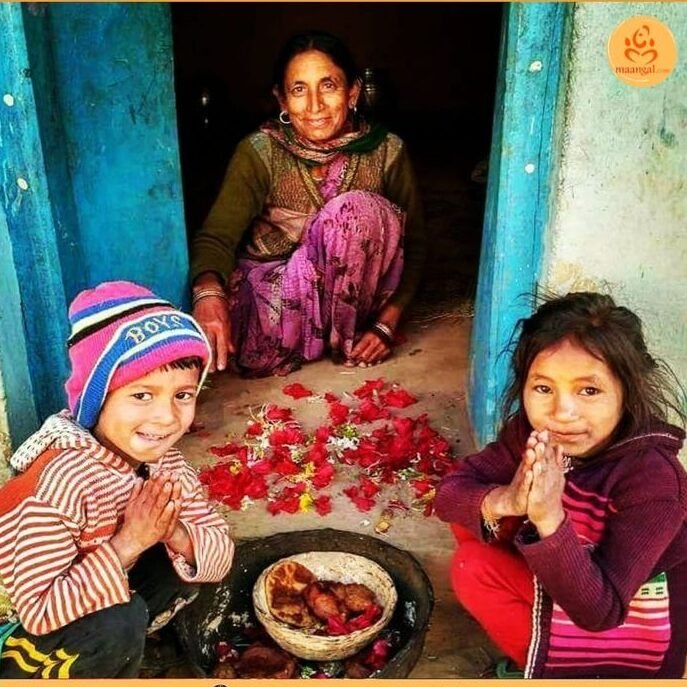
PHOOL DEI – springtime on the doorstep
This one I absolutely loved. In March, little girls go from house to house, scattering flowers at the doorsteps, singing local songs. In return, they get sweets.
One morning in Pauri, I walked through a lane where every doorstep had marigolds and rhododendron petals. The whole street smelled like spring. The kids sang in high-pitched voices, not always in tune, but so full of joy.
Phool Dei doesn’t need fireworks or big rituals. It’s just flowers and songs. And somehow, that purity makes it more heartwarming than any grand city festival.
UTTARYANI MELA – winter’s big fair
January in Kumaon is freezing, but that’s exactly when the Uttarayani mela happens, especially in Bageshwar. Traditionally, it was a trade fair—villagers came with wool, grains, tools. Today, it’s still that, but with folk songs, dances, and even political speeches.
I went once, and it felt like time travel. Stalls with handwoven shawls, spices, wooden toys. Old men bargaining hard, kids running with sesame sweets, women gossiping near stalls. It wasn’t really about buying—it was about meeting, connecting.
For me, it was proof that in the mountains, community still matters.
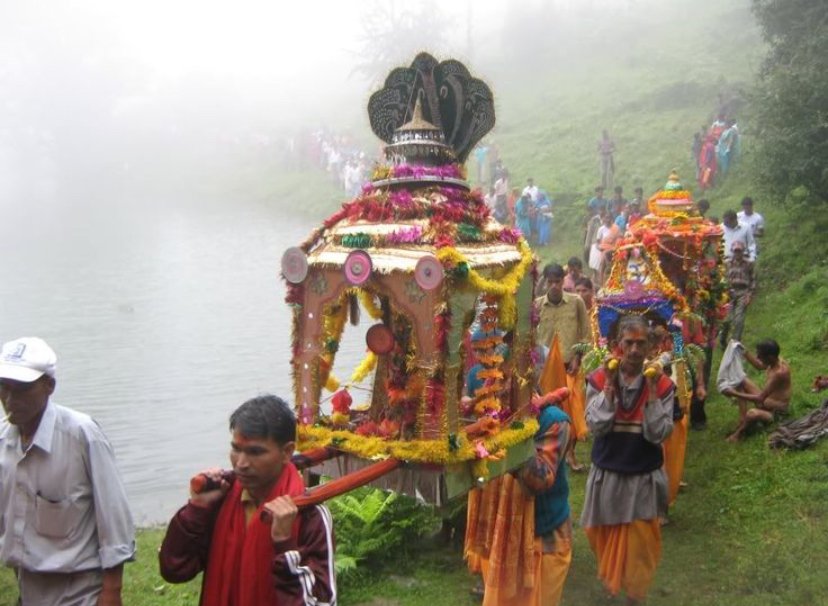
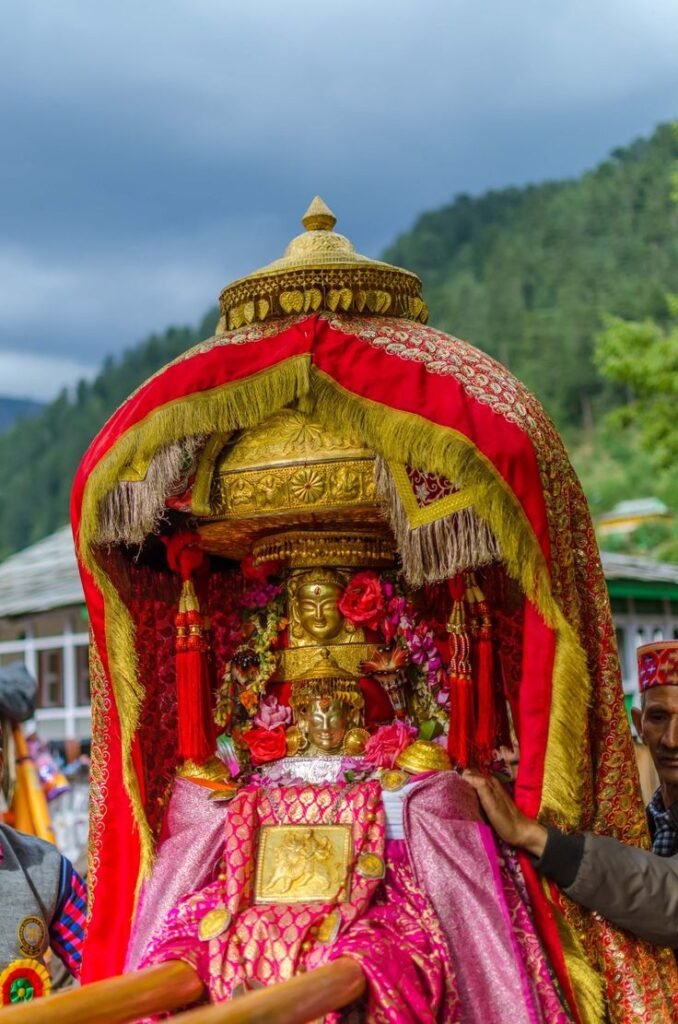
NANDA DEVI RAAJ JAT YATRA – faith on the toughest road
Now this… this is something else. The Nanda Devi Raj Jaat Yatra happens once every 12 years. It’s a pilgrimage of around 280 km through some of the most difficult Himalayan paths.
I couldn’t do the whole thing, but I joined a stretch in Chamoli. Barefoot devotees, carrying offerings, singing songs that echoed in the valleys. It was windy, freezing, but the faith on their faces was solid.
It’s not “fun” in the regular sense. It’s intense, spiritual, and honestly a test of endurance. But standing among them, I felt a kind of energy you can’t explain. You don’t just watch this festival—you live it.
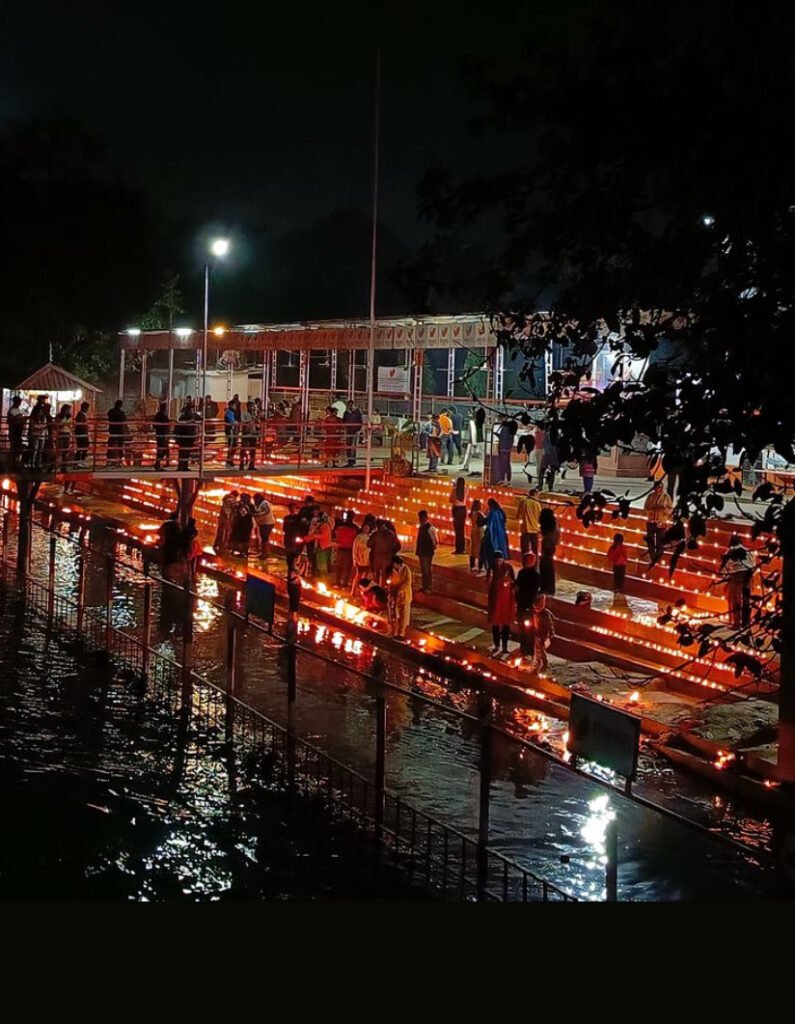
GANGA DUSHEERA – when the river turns golden
In June, Haridwar and Rishikesh light up with Ganga Dussehra. People believe Ganga descended on earth this day, so they take dips in the river.
I stood at Har-ki-Pauri during evening aarti. Hundreds of diyas floating, bells ringing, chants rising, the river glowing like liquid gold. For city folks, a river is just water. For people here, it’s Ma Ganga—mother, goddess, lifeline.
That night, as the diyas drifted downstream, I actually felt calm. Maybe that’s what faith does—it makes chaos look beautiful.
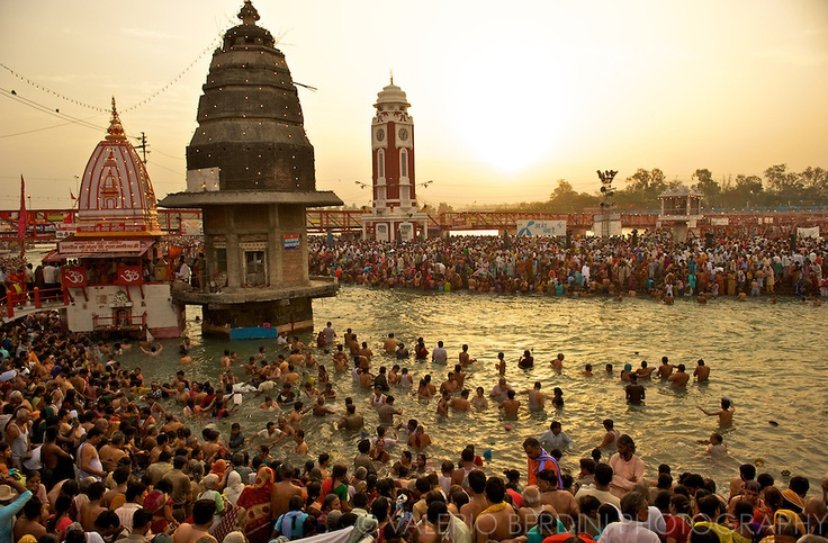
KUMBH MELA – faith in millions
Haridwar hosts the Kumbh Mela every 12 years, and trust me, nothing compares to it. Millions gather—sadhus with ash-smeared faces, pilgrims, tourists, even foreigners. It looks chaotic, but when thousands step into the Ganga together, chanting, it gives you goosebumps.
I attended an Ardh Kumbh once. At first, I thought, “too crowded, too noisy.” But then, standing on the ghats, I felt a strange unity. People from every corner of India, different languages, different clothes, all believing in the same river. It was overwhelming, in the best way.
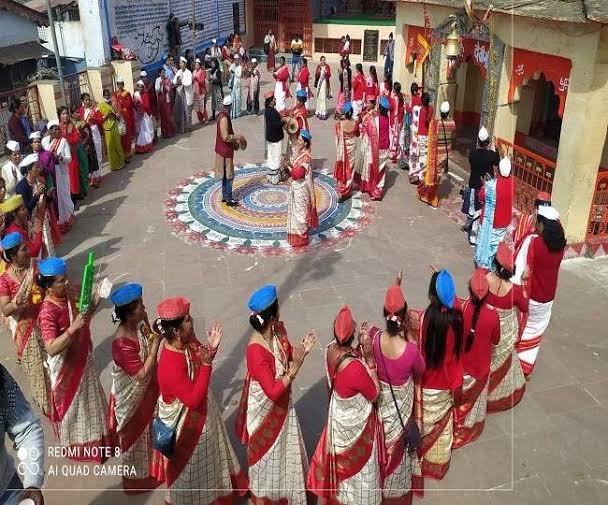
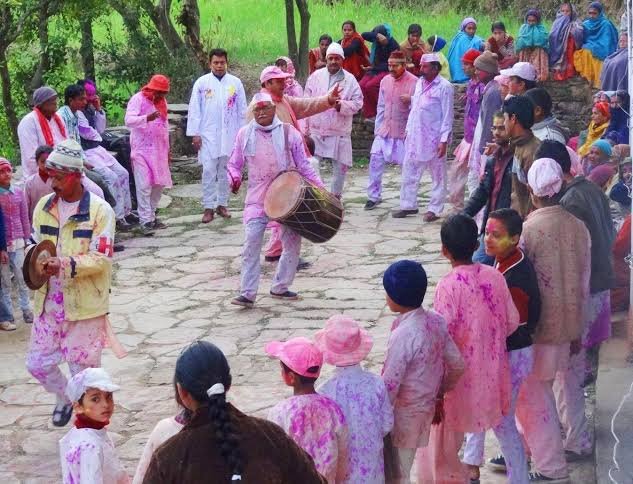
HOLI IN KUMAON – more about music than colors
Kumaoni Holi is different. Here, it’s less about throwing colors and more about singing. For weeks before Holi, people gather in temples, singing baithki holi and khadi holi. Harmoniums, tablas, claps—it’s like a musical marathon.
I sat in a temple in Bageshwar one Holi. Men sang verses of Radha-Krishna, others joined in chorus. It wasn’t loud, it wasn’t messy. It was soulful. Of course, on the main day colors come out, but the highlight is always the songs.
If you’re expecting DJs and water balloons, you’ll be surprised. Kumaoni Holi is more about rhythm than riot.
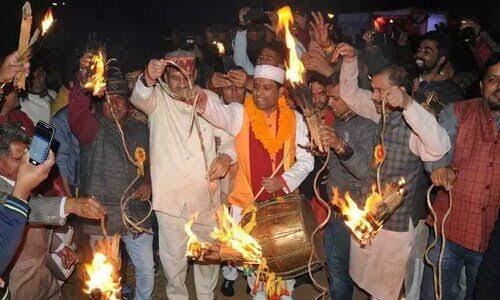
DIWALI AND IGAAS – two rounds of lights
Diwali here feels familiar yet different. Houses lit with diyas, folk songs like Bhailo sung door to door, neighbors exchanging sweets.
Then comes Igas, or Budhi Diwali, a month later in Garhwal. Legend says the news of Ram’s return reached the hills late, so people celebrate later. I was in Tehri during Igas, and honestly, it felt warmer than the usual Diwali. Smaller scale, fewer crackers, but more community spirit. Courtyards glowing, people singing, laughter echoing in the cold night air.
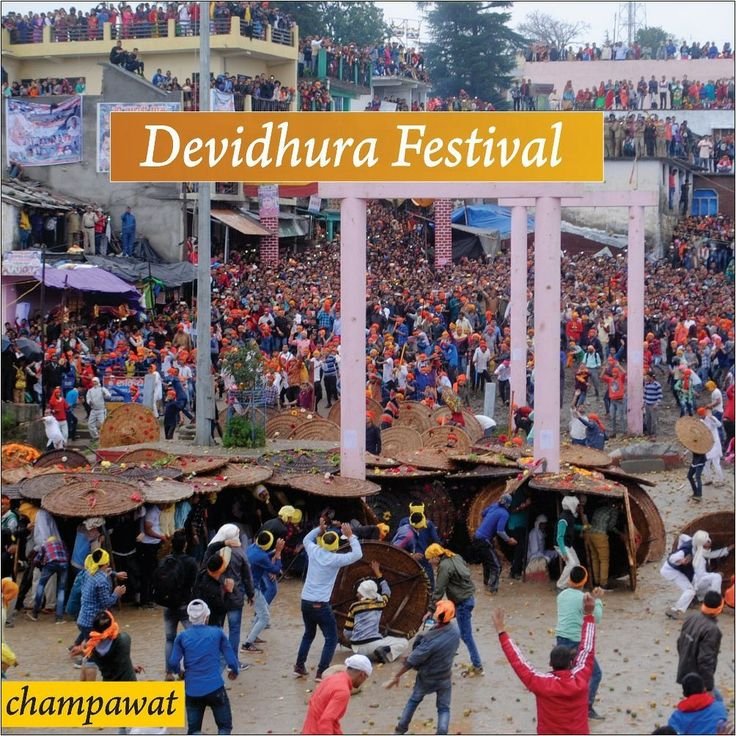
BAGWAL AT DEVIDHURA – yes, it’s stone pelting!
This one shocked me. In Devidhura, people celebrate Bagwal by throwing stones at each other! Don’t worry, now they use symbolic stones and protective shields, but still, the energy is wild.
I stood there once, and the sound of stones clashing mid-air was intense. Outsiders might find it violent, but for locals, it’s faith, tradition, identity. It’s their way of pleasing the goddess. And the pride on their faces showed me—it’s more than just a ritual.
FINAL THOUGHTS
Festivals in Uttarakhand are not just days on a calendar. They’re the rhythm of life in the hills. One day it’s about feeding birds with sweet necklaces, another day millions are dipping in the Ganga. From the tiny innocence of Phool Dei to the massive chaos of Kumbh, it all fits together like a storybook.
And the best part? These festivals are not for “show.” They’re lived, breathed, felt. If you really want to understand Uttarakhand, don’t just trek the mountains. Come during a festival. Eat til laddoos in January, sing Holi songs in March, light diyas in November. That’s when you’ll know the heartbeat of these hills.

